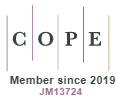Flashover Characteristics Performance Assessment under Contamination Possessions on the Surface of Porcelain Insulators
DOI:
https://doi.org/10.15415/jotitt.2018.61005Keywords:
Porcelain Insulators, Dust, NaCl, Moisture, Contamination, Flashover, Breakdown VoltageAbstract
This paper presents the experimental outcomes regard to the flashover performance of pin, shackle and disc insulators under contaminated conditions. For making contaminated surface various samples are made like salt, dust, industry pollution and miscellaneous foreign particles of wet and dry conditions as per IEC testing techniques. Moreover, each insulator has been tested under above mentioned conditions. For each insulator its breakdown voltages were measured. After doing performance analysis of different insulators under contaminated condition measurement of breakdown voltages are done with incorporation of real field application of insulators and making analogy with various regions of India.
Downloads
References
[2] C. Engelbrecht et al., “Pollution tests for coastal conditions on an 800kv composite bushings,” IEEE Transactions on Power Delivery, vol. 18, no. 3, pp. 953958, 2003.
[3] G. G. Karady, “Flashover mechanism of Non-Ceramic Insulators,” IEEE Transactions on Dielectric and electrical insulation, vol. 6, pp. 718-723, 1999.
[4] H. Homma et al., “Determination of long term performance of polymeric insulators for distribution lines by salt fog method”, Annual Conference on Electrical Insulation and dielectric phenomena, pp. 401-404, 2006.
[5] H. Wang and G. Liu, “Study on insulator natural contamination trend under different physiognomies of local area,” IEEE International Symposium on Electrical Insulation, Vancouver, BC, Canada, pp. 89-93, 2008.
[6] H. Ye, et al., “Contamination accumulation and withstand voltage characteristics of various types of Insulators”, IEEE 7th International Conference on Properties and Applications of Dielectric Materials, Nagoya, Japan, pp.10191023, 2003.
[7] IEC 60060-1, “High-voltage test techniques - General definitions and test requirements”, 2010.
[8] IEC 61109, “Composite insulators for a.c. overhead lines with a nominal voltage greater than 1000 V- Definitions, test methods and acceptance criteria,” 1992.
[9] J. Sun et al., “Influence of pollution distribution on insulator surface on flashover characteristics,” IEEE Transactions on Dielectric and electrical insulation, vol. 21, pp.1637-1646, 2014.
[10] J. Sun et. al., “Pollution accumulation on rail insulator in high-speed aerosol,” IEEE Transactions on Dielectric and electrical insulation, vol. 20, pp.731- 738, 2013.
[11] K. Izumi and K. Kadotani, “Applications of polymeric outdoor insulation in Japan,” IEEE Transactions on Dielectric and electrical insulation, vol. 222, no. 6, pp. 595-604, 1999.
[12] M. A. R. M. Fernando and S. M. Gubhanski, “Leakage Current Patterns on Contaminated Polymeric Surfaces,” IEEE Transactions on Dielectric and electrical insulation, vol. 6, pp. 688-694, 1999.
[13] R. Barsch, H. Jahn and J. Lambrecht, “Test methods for polymeric insulating materials for outdoor hv insulation,” IEEE Transactions on Dielectric and electrical insulation, vol. 6, pp. 668-674, 1999.
[14] R. Hernandez, I. Ramirez and G. Montoya, “Evaluation of 23kv insulator profiles with different pollution levels”, 19-22 Sept., IEEE International Symposium on Electrical Insulation, Indianapolis, IN, USA, pp. 304-307, 2004.
[15] S. Chandrasekar and C. Kalaivanan, “Investigation on leakage current and phase angle characteristics of porcelain and polymeric insulator under contaminated conditions”, IEEE Transactions on Dielectric and electrical insulation, vol.16, pp. 574-583, 2009.
[16] T. Kikuhi, S. Nishimura, M. Nagao, KI-zumi, Y. Kubota, and M. Sakata, “Survey on the use of non-ceramic composite insulators,” IEEE Transactions on Dielectric and electrical insulation, vol. 6, pp. 548-556, 1999.
[17] Z. Zhang, D. Zhang and X.Jiang, “Study on natural contamination performance of typical types of insulators,” IEEE Transactions on Dielectrics and electrical insulation, vol. 21, pp. 1901- 1909, 2014.
Downloads
Published
How to Cite
Issue
Section
License
Articles in Journal on Today's Ideas - Tomorrow's Technologies (J. Today’s Ideas - Tomorrow’s Technol.) by Chitkara University Publications are Open Access articles that are published with licensed under a Creative Commons Attribution- CC-BY 4.0 International License. Based on a work at https://jotitt.chitkara.edu.in. This license permits one to use, remix, tweak and reproduction in any medium, even commercially provided one give credit for the original creation.
View Legal Code of the above mentioned license, https://creativecommons.org/licenses/by/4.0/legalcode
View Licence Deed here https://creativecommons.org/licenses/by/4.0/
 |
Journal on Today's Ideas - Tomorrow's Technologies by Chitkara University Publications is licensed under a Creative Commons Attribution 4.0 International License. Based on a work at https://jotitt.chitkara.edu.in |











